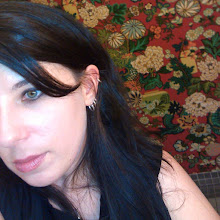Alfons Maria Mucha (24 July 1860 – Prague, 14 July 1939), often known in English and French as Alphonse Mucha, was a Czech Art Nouveau painter and decorative artist, known best for his distinct style. He produced many paintings, illustrations, advertisements, postcards, and designs.
Mucha produced a flurry of paintings, posters, advertisements, and book illustrations, as well as designs for jewellery, carpets, wallpaper, and theatre sets in what was termed initially The Mucha Style but became known as Art Nouveau. Mucha's works frequently featured beautiful young women in flowing, vaguely Neoclassical-looking robes, often surrounded by lush flowers which sometimes formed halos behind their heads. In contrast with contemporary poster makers he used pale pastel colours. Mucha's style was given international exposure by the 1900 Universal Exhibition in Paris, of which Mucha said, "I think [the Exposition Universelle] made some contribution toward bringing aesthetic values into arts and crafts."
He decorated the Bosnia and Herzegovina Pavilion and collaborated with decorating the Austrian Pavilion. His Art Nouveau style was often imitated. The Art Nouveau style however, was one that Mucha attempted to disassociate himself from throughout his life; he always insisted that rather than maintaining any fashionable stylistic form, his paintings were entirely a product of himself and Czech art. He declared that art existed only to communicate a spiritual message, and nothing more; hence his frustration at the fame he gained by his commercial art, when he most wanted to concentrate on more artistic projects.
The rising tide of fascism during the late 1930's resulted in Mucha's works, as well as his Slavic nationalism, being denounced in the press as 'reactionary'. When German troops moved into Czechoslovakia during the spring of 1939, Mucha was among the first persons to be arrested by the Gestapo. During his interrogation, the ageing artist became ill with pneumonia. Though released eventually, he may have been weakened by this event. He died in Prague on 14 July 1939, due to lung infection, and was interred there in the Vyšehrad cemetery.
(source)








